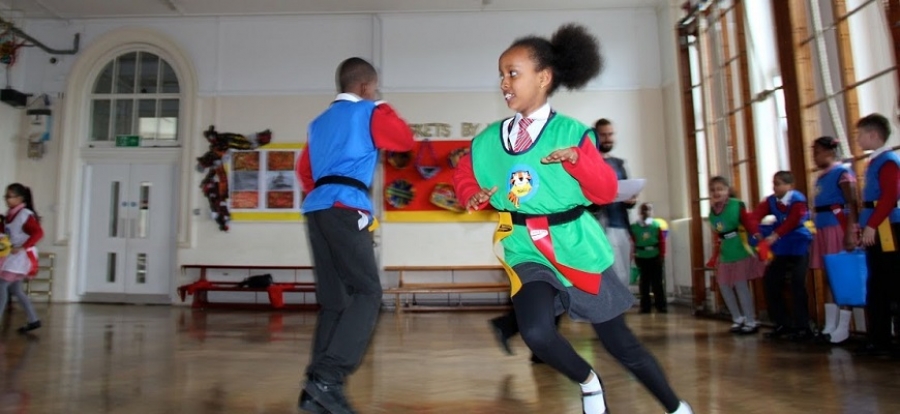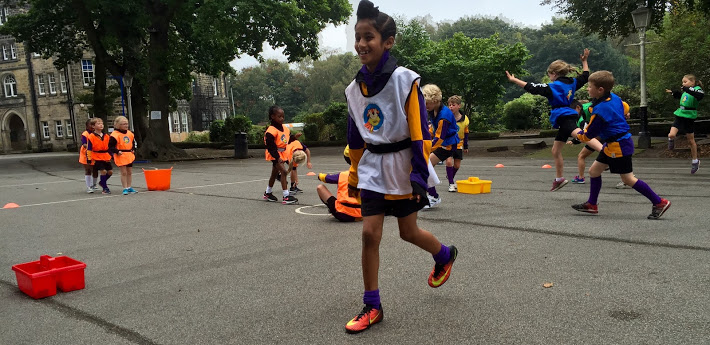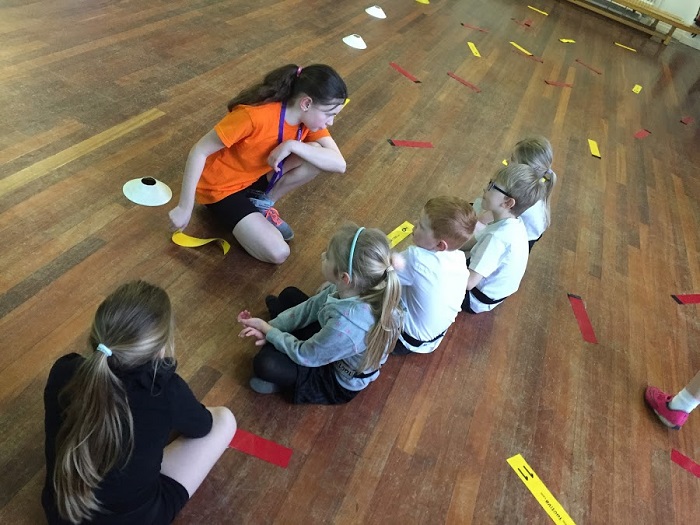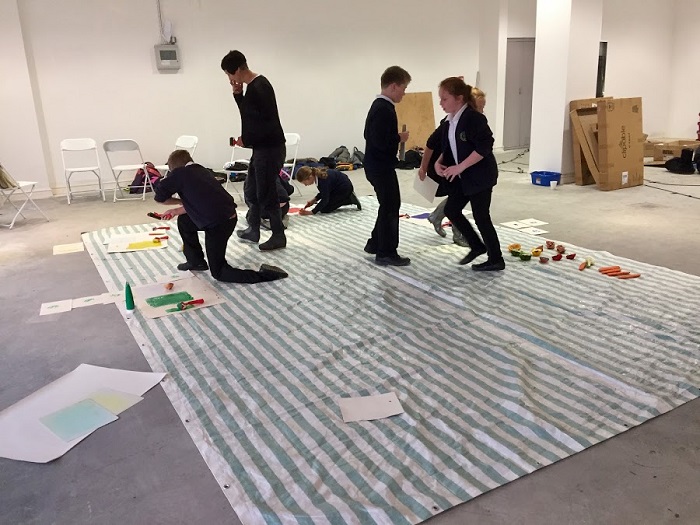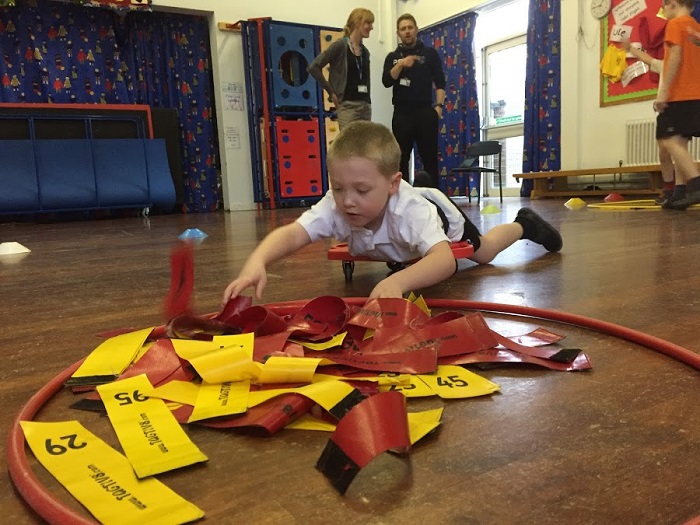Bryn Llewellyn, founder of Tagtiv8 Active Learning, digs further: “Have we ever questioned, why is it the norm for children to sit in classrooms to learn? When did it start?” One headteacher replies that “it’s because I was taught in this way when I was a child… and that my teacher was taught in the same way.”
As you know, we have made huge strides in technology, yet classrooms then and now are not fundamentally that different. As Sir Ken Robinson recognises, “The problem is that the current system of education was conceived, designed and structured for a different age.” Instead, he proposes, “We need different sorts of environments to:
- stretch our bodies
- to extend our minds and stimulate them
- and allow us to interact with other people.”
Sadly, many Primary schools are so focused on English and Mathematics, that the wider curriculum (without intention) can be neglected.
This isn’t the only reason why children are taught in traditional ways, ie learning while sitting down. The perception of many is that when children are sat down, they are easier to manage and keep on task. Some of these perceptions are down to the fact that most teachers receive minimal training in physical education. If Initial Teacher Training was improved, Newly Qualified Teachers would feel more confident in leading learning beyond the classroom.
While sitting down is the dominant paradigm, we need to ask ourselves: “Does it provide optimal conditions for learning?”
As teachers, we often assume that if the children are sitting quietly, they are paying attention. Yet, evidence shows that children in classrooms may not be as focussed as we may perceive:
- “I can’t wait for play/lunch time’
- “How long till the end of the day?”
- “I can’t wait to get home and play Fortnite.”
Studies from the USA show that attention spans are decreasing - for various reasons. Yet many lessons continue to run between 45-60 minutes. Testing means that, for many children, English and Maths are their staple diet. Subjects are taught in boxes - with certain boxes larger than others. The narrowing of the curriculum means that physical education and the arts are often shunted to one side. With education focussed on exam/test performance, we have created a drill-and-practise culture, where children are expected to sit and concentrate for extended periods of time. Studying to the test may work for some, but it’s not the case for all.
Andy continues: “It is not just about education. Habits are formed within the early years, which are increasingly more challenging to change as we age. Globally, 50% of children are insufficiently active. Even lower levels are seen in higher income countries such as the UK and America. Physical activity levels begin to decline when pupils are aged 7; in Key Stage 1. School lessons are the most inactive segment of a child’s day, with minimal time for physical activity. Therefore, If children spend the majority of time at school sat in a chair, are we establishing a positive health trajectory? What is the result? We are in the middle of an obesity and mental health epidemic. Both of which are detrimental to educational performance.”
So what is the solution? Could it be Physically Active Learning? What is it? What does it look like?
To Rich Allman, SLT member at Malton Community Primary School and codirector of Move & Learn, “Physically Active Learning is about seamlessly integrating movement with learning.
“Physically Active Learning approaches can be blended into different environments. For example:
- children using Moderate to Vigorous Physical Activity (MVPA) levels during active number relays in the playground,
- learning their times tables through dance videos in the classroom,
- zooming around on scooter-boards in the hall - collecting numbers and letters with which to work and play,
- or maybe slowing things down to a lower level of physical activity and exploring the forest.”
Ian Holmes, headteacher at Thorner Primary School and codirector of Move & Learn, takes this one step further: “Do these approaches not look and sound familiar? Do they not seem like the approaches used so successfully in the Early Years Foundation Stage? We know that young children are naturally curious and naturally creative. But why should this stop at the early years? Could we not extend play-based learning beyond the early years curriculum into KS1 and KS2, whilst still delivering a knowledge and skills rich curriculum?”
Year 2 children @QueenswayPS using active learning approaches to enhace their topic work on plants. #activelearning #creativity #getmoving Another reason why the @tagtiv8 resources are an essential resource for schools. pic.twitter.com/HUjjLRZ2Lc
— Queensway PS (@QueenswayPS) May 11, 2018
He adds: “We are not saying that all lessons should be physically active, as it needs to be able to appropriately and naturally support the learning intentions that need to be delivered. What the Physically Active Learning pioneers are saying is that we intersperse the day with activity, and find those opportunities where it can be used so children start to see it as a natural part of the way they learn.”
Bryn provides an example of Physically Active Learning in practice during a Tagtiv8 session at a school in Durham: “While teaching the Year 6 class, I was mesmerised by two boys - Jack and Lewis - who completely bought into the physical challenge and then the thinking challenge. When asked, ‘What do you notice?’, Lewis replied:
‘There’s a pattern - it’s a multiple of 8 plus 1, then the next multiple of 8 plus 2 and so on…’
I was blown away. Nobody else - child or teacher - has ever made this observation over the years I have played the game. When I told the Year 6 teacher about what I had observed, his response was:
‘Lewis?! Really? He hates Maths.’”
Rich Allman: “With these observations in mind, we set about asking ourselves:
- Does Physically Active Learning work as well as play?
- Does it really impact positively on cognition - rather than just resulting in lots of smiles and a bit of sweat?”
Andy: “International research shows that children who are physically fit and active perform better academically specifically in Maths, reading and composite overall scores.
“Owing to the highly variable nature of Physically Active Learning, outcomes are not uniform. For example, we cannot expect a low intensity, classroom-based movement session to have the same benefits as a vigorous number relay in the sports hall. What we do know is that integrating movement does not do any harm and may actually be beneficial. For example, the impact of one 45-minute Physically Active Learning session led to a total of 10 minutes of health-enhancing physical activity, nine more than a classroom-based learning session.
“When we assessed Mathematical fluency, we found that those children in the Physically Active Learning session gained 1.61 (7%) marks more than those in the seated classroom session. What was really interesting, those pupils who achieved 12 of more minutes of health enhancing PA achieved even higher marks, 3.73 (16%) more than the seated classroom condition.”
How do we make it happen? How do we make Physically Active Learning acceptable, and even the norm?
The ‘Move & Learn’ movement has already started. We already have pioneering teachers and schools across the globe who embrace Physically Active Learning. Just look at the smiles and positivity from schools such as Water Primary School and Queensway Primary School.
Lightsaber Times Tables in Class 4 as part of our Star Wars themed move up morning! Inspired by @tagtiv8 #StarWars #activelearning pic.twitter.com/rREmFEqsFe
— Water Primary (@Waterprimary) June 21, 2018
The Move & Learn approach doesn’t have to be restricted to schools or by age. To move beyond a few, we need to THINK BIG - a paradigm shift is required. We need to:
- Empower teachers by increasing their competence and confidence to use Physically Active Learning approaches across a variety of environments. This needs to start with Initial Teacher Training.
- Support schools to develop and implement movement-based approach to education.
- Develop research beyond Primary and Elementary schools into Secondary and High schools.
- Share research findings on the outcomes of Physically Active Learning to education and to health.
Crucially, we need to influence ministers and policy makers - the powers that be - to widen the curriculum and allow school leaders and teachers - or better still - encourage and support them to adopt Physically Active Learning approaches across the curriculum.
You never know…..one day we may solve the irony that you have probably been sitting while reading this article.
Want to receive cutting-edge insights from leading educators each week? Sign up to our Community Update and be part of the action!


